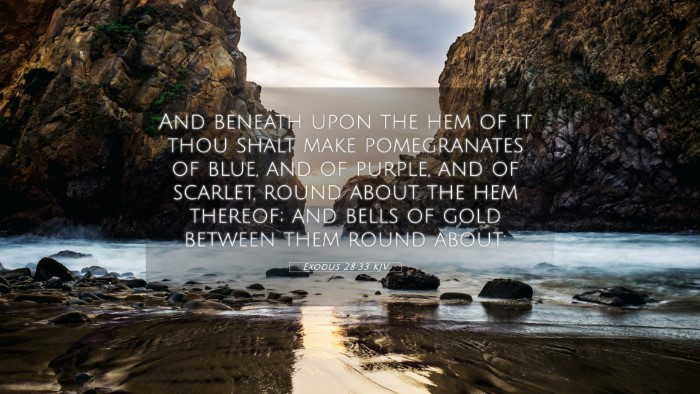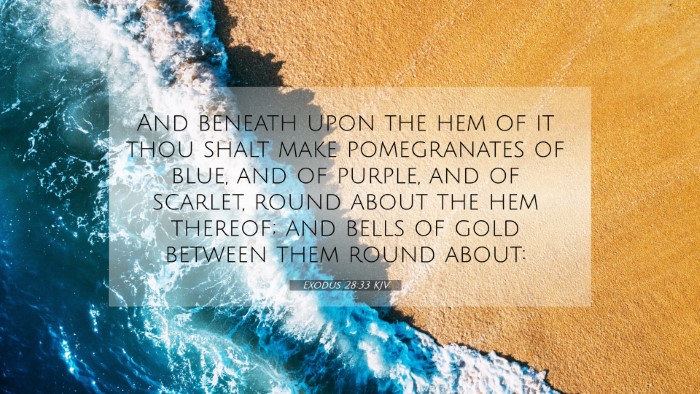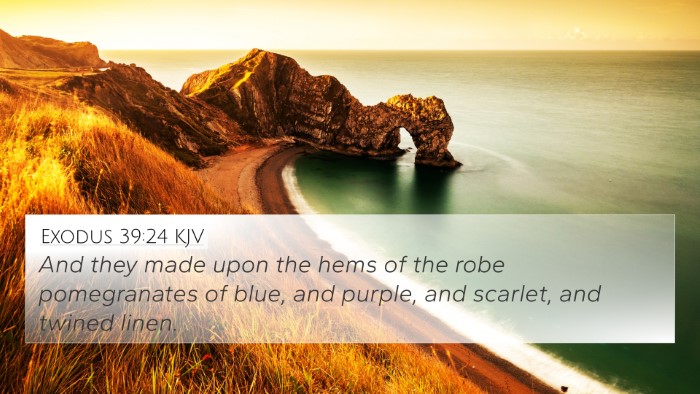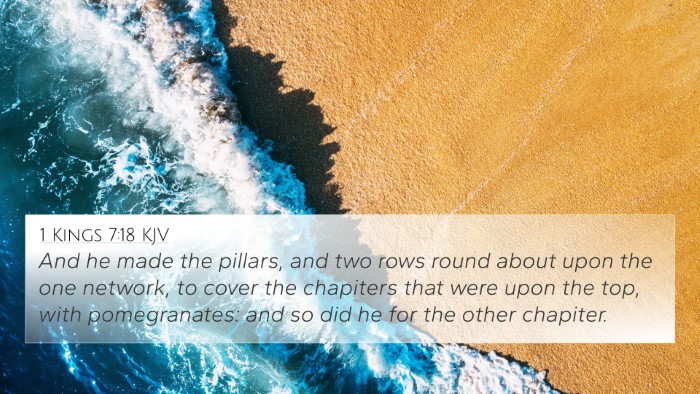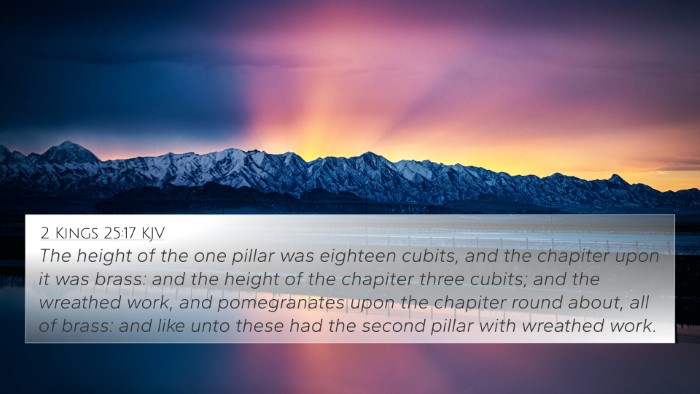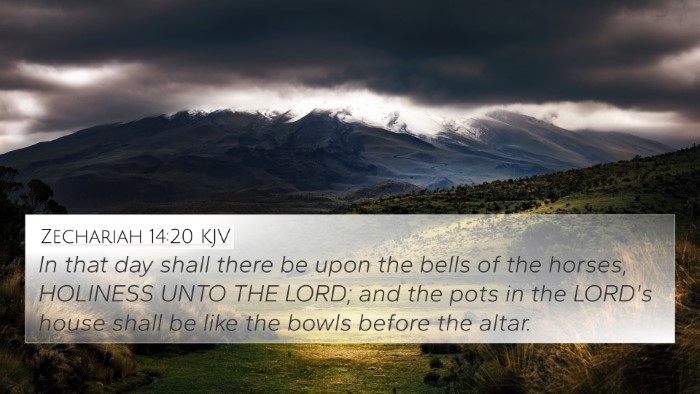Exodus 28:33 - Meaning and Interpretation
Verse: "And beneath upon the hem of it thou shalt make pomegranates of blue, and of purple, and of scarlet, round about the hem thereof; and bells of gold between them round about." (Exodus 28:33)
Overview: Exodus 28:33 describes a specific element of the high priest's garments, emphasizing the details of how pomegranates and bells are to be arranged. These elements hold significant symbolism related to the responsibilities and the holiness of the priestly office.
Symbolism of the Elements
- Pomegranates: Often symbolize fruitfulness, resurrection, and the abundance of God's blessings. Their inclusion signifies the priest's role in representing the people before God with offerings of gratitude.
- Bells: Serve to communicate the priest's presence as he enters the holy place, symbolizing the idea that he is coming before God to conduct sacred duties. The sound of the bells was intended to assure those outside of the sanctuary that the priest was performing his tasks dutifully.
Commentary Insights
Matthew Henry: Henry emphasizes the importance of the priest’s garments in signifying the holiness and dignity of the office. The bells serve as a reminder of God's presence and the seriousness of worship. Moreover, the use of vibrant colors—blue, purple, and scarlet—illustrates the majesty of divine service.
Albert Barnes: Barnes highlights the practical function of the bells, suggesting they were used to signal the entrance and movements of the high priest within the sacred areas to ensure safety and sanctity as he approached the presence of God. Barnes points out that the act of dressing appropriately was crucial in expressing the importance of sacredness in worship.
Adam Clarke: Clarke offers a theological reflection on the combination of sounds (bells) and symbols (pomegranates). He notes that the adornment serves both an aesthetic and a functional purpose in worship, indicating that God desires beauty and order in His service. The interplay of sounds and sights in worship reflects the harmony of the divine presence and human response.
Bible Cross-References
Exodus 28:33 is closely related to the following other scripture references:
- Exodus 28:34-35: Further instructions about the high priest's garment, reinforcing the significance of sound in worship.
- Leviticus 8:7-9: Discusses the consecration of Aaron and the importance of priestly garments.
- Numbers 20:28: Reflects on the attire of Aaron, symbolizing the guaranteed identity of priests before God.
- Revelation 1:6: Provides a New Testament perspective on the priestly role of believers—indicating that they serve a similar function in presenting themselves before God.
- Hebrews 5:1: Talks about the high priest's role in mediating between God and humanity, echoing Old Testament practices.
- Matthew 27:51: The tearing of the temple veil at Jesus’ death symbolizes the end of the Old Testament priesthood, making way for a new covenant.
- 1 Peter 2:9: Refers to the priesthood of believers, linking the ministerial roles of Old Testament priests with that of Christians today.
Comparative Bible Verse Analysis
The imagery within Exodus 28:33 highlights significant themes of holiness, mediatorship, and the active involvement of God's people in worship. By examining the symbolism of the elements involved and understanding their implications within the larger context of the biblical narrative, one can appreciate the rich tapestry of connections that run throughout Scripture. Notably, the theme of God’s holiness is prevalent as believers are called to enter His presence with reverence.
Tools for Bible Cross-Referencing
Engaging with a Bible concordance or a cross-reference guide can enhance the study of Exodus 28:33. Utilizing these tools allows for:
- Identifying connections between Old and New Testament teachings.
- Finding comprehensive cross-reference materials that elucidate thematic linkages.
- Exploring inter-Biblical dialogue to understand how various scriptures speak to one another.
Conclusion
Exodus 28:33 serves not only as a detailed instruction on the attire of the high priest but also as a rich source for theological reflection and relational understanding in the context of worship and mediation. Through cross-references and comparative studies, deeper insights into this verse can guide believers in their understanding of the holistic nature of Scripture and the continuing relevance of these ancient texts in modern faith practices.

